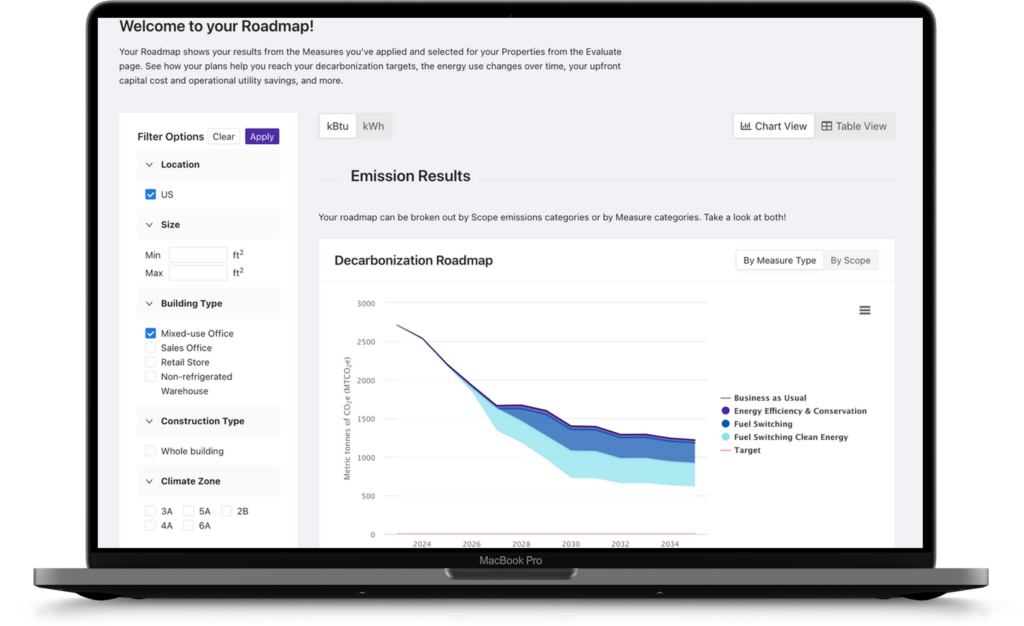Written by: Nicolas Blackburn
National Building Performance Standards Coalition
With the increasing awareness of climate change and its repercussions, the drive towards sustainability has gained momentum. The built environment, one of the largest contributors to greenhouse gas emissions, has to adopt a more sustainable approach to make a difference in the fight against climate change. With the National Building Performance Standards Coalition (NBPSC), many cities now have access to a standardized approach to tracking energy performance and reaching their sustainability goals. In this blog, we will explore what the coalition is all about, how it aims to make buildings more energy-efficient, and cities like New York, Boston, Washington D.C., and Denver, among others, are paving the way.
The National Building Performance Standards Coalition is a collaborative effort between governments to establish standardized building performance standards across the country that promote energy efficiency, provide economic benefits, and reduce carbon emissions. The coalition aims to make buildings more energy-efficient by establishing a framework of national building energy performance standards. The standards are designed to promote transparency and sustainability while reducing energy bills for building owners and occupants.
How does Carbonsight align with Building Performance Standards laws?
Carbonsight, Autocase’s new building portfolio decarbonization planning tool, helps building owners assess their energy consumption, identify areas for improvement, and develop customized decarbonization strategies.

It offers comprehensive analytics, benchmarking, and scenario modeling capabilities, enabling owners to evaluate the impact of energy-saving measures and prioritize investments. By leveraging Carbonsight, building owners can meet energy performance standards set by their cities, reduce carbon emissions, and improve energy efficiency. This not only contributes to reducing greenhouse gas emissions but also unlocks cost savings and enhances the long-term value of real estate portfolios, creating sustainable, future-proof buildings and a greener future for our cities. By taking action now, we can create a greener, more sustainable future for our cities.
Local Law 97
One of the most commonly known examples is Local Law 97 in New York City. The law mandates buildings over 25,000 square feet to meet strict greenhouse gas emissions limits starting in 2024, with the emissions limit progressively tightening every five years. It is part of New York’s Climate Mobilization Act, which aims to cut its carbon footprint in half by 2030. Buildings that fail to comply with the law face a fine of $268 per ton of carbon emitted above the limit. By setting such ambitious goals, the City is leading the way in building decarbonization and inspiring other cities to follow their example.

Assume a 200,000 square foot university building. The building limit emissions factor for the College/University ESPM Property Type in 2024 is 0.00987 tonnes of carbon dioxide equivalent per square foot (tCO2e/sf). Therefore, the university building’s emissions limit is 1,974 tCO2e. Let’s say the building’s energy consumption is 7,000,000 kWh of electricity and 9,000,000 kBtu of natural gas. Using the provided GHG emission factors (0.00029 tCO2e/kWh for electricity and 0.00005 tCO2e/kBtu for natural gas), the university building’s reported emissions are 2,501 tCO2e. This means the university is producing 527 tCO2e more than their building emissions limit. If the building owners do not take the required measures to lower their emissions, they will face an annual non-compliance penalty of $141,162 (at $268/tCO2e). The university building’s emission factor tightens over time to 0.00210 tCO2e/sf in 2030, effectively reducing the building’s emissions limit to only 420 tCO2e and increasing its annual non-compliance penalty from $141,162 to $287,575. This indicates to building owners that time is of the essence, and they should take action to adopt energy conservation measures in order to avoid increasing financial costs.
Building Performance Standard laws in other cities
Numerous other cities have introduced similar laws to reduce GHG emissions and promote sustainable buildings. Boston’s Building Energy Reporting and Disclosure Ordinance requires buildings of 35,000 square feet or more to report annual energy usage to the city. The data is made available on the City’s website, enabling residents to make informed decisions about the buildings they live and work in. Washington, D.C.’s Clean Energy DC Omnibus Amendment Act aims to make the District carbon-neutral by 2050 and sets a goal of reducing greenhouse gas emissions by 50% by 2032. The Act includes several provisions intended to promote energy efficiency in buildings – from benchmarking and energy labeling to retro-commissioning and energy performance standards. Denver’s Green Buildings Ordinance requires all commercial and multifamily buildings over 25,000 square feet to meet a final EUI target by 2030, with interim targets in 2024 and 2027.
Conclusion
Building performance standards are a critical tool for cities to tackle climate change by reducing greenhouse gas emissions. The National Building Performance Standards Coalition provides a standardized approach for cities to monitor building energy consumption, which helps identify areas for improvement and promote sustainable practices. While implementing performance standards can be costly and challenging, many cities, including New York, Boston, Washington DC, and Denver, have embraced these laws to achieve their environmental goals. Carbonsight, Autocase’s powerful decarbonization planning tool for real estate portfolios, can be of immense help to building owners wanting to take proactive steps towards decarbonization and meeting these standards.
0 Comments